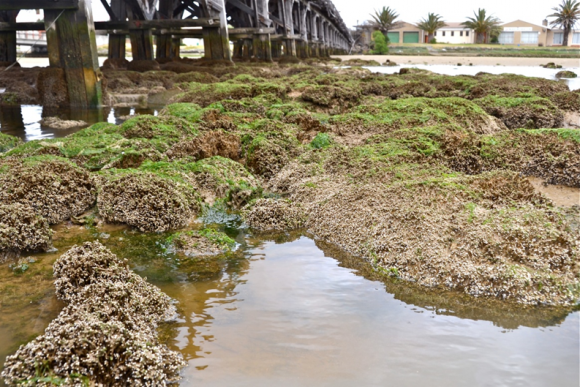17 October 2011 | By Marc Rius
The poorly resolved taxonomy of many organisms represents a major obstacle to correctly identifying them as being either native or introduced. This is because several groups are only known to a handful of experts. For example, the marine group of ascidians (also known as sea squirts) comprises around 3000 species and only six taxonomists have described half of them. This is especially surprising because this group is the closest living relative to the vertebrates and therefore represents an essential group for the study of the evolution and development of the phylum Chordata. This intimate relationship only becomes clear when one takes a closer look at the microscopic sea squirt larvae. Unlike other invertebrates, these larvae have a notochord that is reabsorbed when they settle on hard substratum, and the animal undergoes metamorphosis to become a sessile filter-feeding organism protected by a tough cellulose cover. Besides the key phylogenetic position in the tree of life, sea squirts are also of great interest to scientists because they contain chemical compounds that can been used for medical purposes, they are ecosystem engineers that are often key components of benthic communities, and an increasing number of these organisms are becoming invasive and threaten human activities.

There is one species of sea squirt (Pyura stolonifera) that is quite well known by the common public. This is the coastal ascidian known as “red bait” in South Africa, as “cunjevoi” in Australia, and as “piure” in Chile and is largely harvested for bait and human consumption. This unusually large sea squirt can become extremely abundant in the right habitat and form dense aggregates. In regions where it has been introduced, such as in Chile and New Zealand, this species has proven to be highly invasive. Besides the conspicuous nature of this organism in both intertidal and subtidal environments, its taxonomy has until recently been poorly resolved. In two publications published this year in BMC Evolutionary Biology and Zootaxa, an international team of researchers lead by Peter Teske, a marine geneticist at Rhodes University, and a former C·I·B postdoc, Marc Rius, examined the global distribution of this ascidian and showed that P. stolonifera is in fact a species complex that comprises at least five species. This is one of the most striking examples of cryptic diversity in a conspicuous coastal organism and alerts us to the need for correctly identifying the introduced and native range of invasive species.
The very short larval phase of ascidians poses an intriguing question: how is it possible that an animal with poor dispersal capabilities can be present on several continents? Traditionally, the explanation had been that Pyura stolonifera was already around during the days when Africa, Australia and South America were part of the same supercontinent, Gondwana, and that the different populations became separated as the continents drifted apart. However, it is now well known that sea squirts can travel attached to transoceanic vessels and as a result several species have established themselves in regions where they have not previously been recorded.
Overall, the studies presented here review the taxonomic status of populations previously known as Pyura stolonifera from South Africa, Australia, Chile, New Zealand and Morocco using genetic and morphological methods. The results have discerned five different species, including the description of a species new to science and a second species description in preparation, as well as the distinction of invasive and native ranges around the world’s coastlines.

Read the papers:
Contact the author:
For further details, email Marc Rius (mrius@ucdavis.edu)

